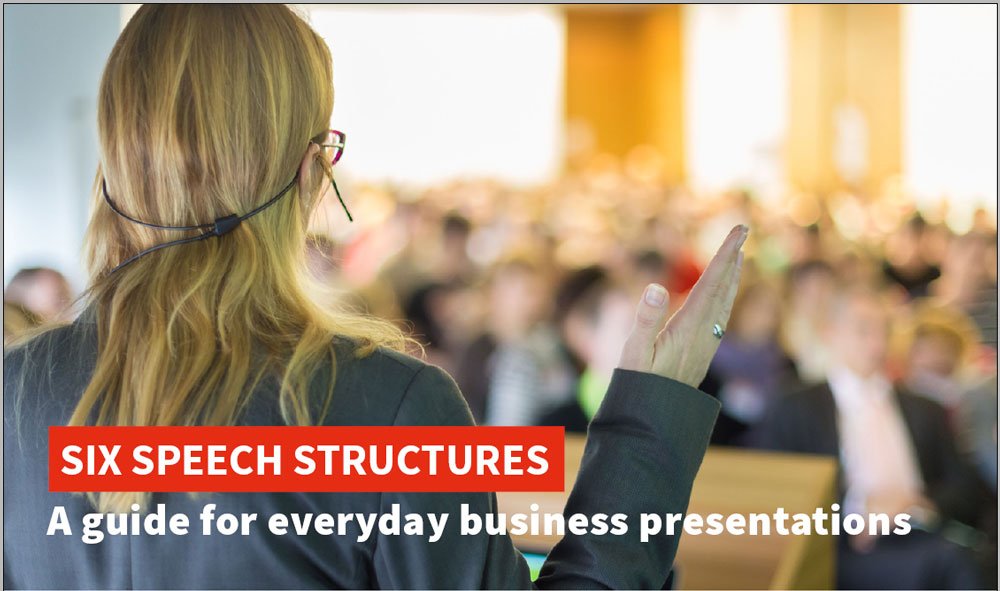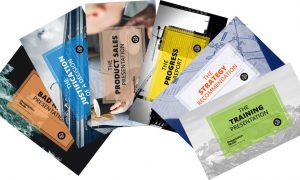The Two Most Important Things in the World of Presenting Today


The world of business presenting is changing rapidly, and as a community we’re always looking for insight on how to stay on top of such a dynamic industry. Here, Maurice lists some of the major issues to be aware of, with detailed solutions for each.
Ten years ago, almost to the day I relinquished my prime parking space to teach professionals what I believed were the two most important things they needed to know about presenting in business. Having spent what felt like a lifetime enduring all manner of torturous presentations I finally decided that something had to change.
Casting my mind back to the years preceding 2006 I don’t recall a single week passing by without highly talented, experienced and creative people reading a long list of bullet points out to me. Senior people who were experts in their field suddenly transformed into ‘speaking robots’ draining the life force out of me with charts, clipart and clichés.
What do you think has changed in the world of business presenting today?
We’re three quarters of the way through 2016, and I’d say, not too much. Ten years on extremely gifted and intelligent professionals continue to needlessly anaesthetise people in businesses all over the world with lacklustre presentations.
What many don’t realise is that there are only two things standing in their way from connecting with others emotionally as well as intellectually.
Those two things revolve around leadership and mindfulness.
Leadership – from above
Each time any of us are offered the opportunity to present to colleagues, clients or our management team we are in a privileged position to lead regardless of our title. Before we explore what that means in more detail, let’s look at the greatest leadership obstacles which continues to perpetuate a global culture of mediocre presenting.
1) The ‘Corporate Template’
Those dreaded templates with your company logo plastered everywhere and those six boxes which insist you place everything in order just before your pie chart. Fraught with bullet points, text and data these templates serve purely to stifle creativity and the human voice.
The solution – Take the handcuffs off
You really don’t need your company logo on every slide, no one cares. If you suppress people’s imagination and free thinking you are doing your organisation a great disservice. Take the ‘handcuffs’ off of your team and let them express themselves in a way that will not only surprise you but add enormous value to your business.
2) The mind reader
Your boss has just asked you to give a presentation next week to the executive team on ‘The future of customer service in ABC Enterprises Ltd’. When your heart finally stops racing at the thought of presenting to such hierarchy you then think, what a great opportunity. A few hours later the cold hard grasp of reality kicks in again and you think ‘I wonder what she really wants from me’, that’s when the sleepless nights begin.
The reason for those sleepless nights is your boss thinks you can read her mind and that just by giving you a title you will know exactly what she wants.
The solution – Tell them what you want
Don’t just dump a title or topic on someone and ask them to present their ideas on it for 20 minutes. Share with them exactly what it is you have in mind in terms of what you want, need and expect. Give them some specific guidance so they don’t spend the next week anxiously trying to second guess exactly what it is you want from them.
Help them out by sharing your own thoughts and expectations and if you don’t have any then don’t criticise them if you don’t like theirs.
If your boss doesn’t give you the insights you need be sure to ask for it.
3) It’s their job
Isn’t it interesting that many business leaders expect so much from their staff when it comes to presenting to them that they some just can’t understand why they aren’t very effective. Given the fact that most of us are not taught how to present our ideas in public when we are at school, college, university or indeed work itself it’s no wonder that so many professionals struggle.
I’ve lost count of the number of leaders I have met who hold the belief that their staff should be capable of presenting their ideas with impact because ‘that’s what we pay them for’.
That premise is, of course, as unhealthy and damaging as it is delusional.
The Solution – Help them
None of us are born high impact presenters or public speakers. Acknowledge the fact that we can live our whole lives never being taught how to speak in public and that it is one of the world’s most common sources of anxiety.
Once you have done so, do whatever it takes to help your team to communicate with confidence, power and grace. Train, coach or mentor them yourself to help them to find their authentic voice and make a difference to your organisation.
If your boss is a contributor to some of these issues, please send him or her a copy of this article with my compliments.
Leadership – from you
Even if your management team don’t take on board and address the issues I have shared to support you in your quest to be a high impact presenter there is still plenty you can do for yourself.
The starting point is recognising the fact that you have a clear and powerful opportunity to lead each time you speak. Regardless of your experience or confidence everything you need to lead is within your grasp:
- Believe in your message and the difference it will make to your audience.
- Stand tall, proud and strong remembering that all your audience want from you is to help them.
- Don’t try to emulate the late Steve Jobs or Winston Churchill, just show them the very best of you.
- Remember how excited you were on Christmas Eve as a child. You weren’t nervous, you just couldn’t wait for Santa to arrive because you knew he had something good to give you. Harness that feeling of excitement and focus on the good you can do for your audience.
- All people really want from you is for you to help them to see the future, help them to see it and they will be extremely thankful.
- Put yourself in your audience’s shoes and every slide you craft and each sentence you construct ask yourself ‘what difference will this make to them’.
Mindfulness
Please don’t make the mistake that so many do in thinking that mindful presenting involves sitting in front of your laptop meditating and chanting for hours before you speak.
I believe that mindfulness is critical in presenting and public speaking today and arguably life in general. Human beings are creatures of habit, and when it comes to presenting we tend to use the same style of slides, we stand, speak and present in exactly the same way as we always do. Regardless of our topic, message or audience most business presenters generally do exactly what they always do in the way they have always done it.
The net result of which is what I call a ‘mindless’ presentation as the presenter simply goes through the motions in the hope that they get through it without someone asking a question they can’t answer.
I’ve learned that the greatest gift any presenter could possibly give their audience is the gift of mindfulness.
Like most things in life that is of course easier said than done, so what does it take to become a mindful presenter?
- You take the time to understand what works for you and what doesn’t work so well for you as a speaker.
- You get as much feedback as you can.
- The very last thing you open is your laptop. The first thing you open is your mind.
- What on earth is so important that you can’t just send them an email?
- Why should your audience listen to you and why should they care?
- What is really important to them and how can you help them?
- How do you want them to feel?
- What do you want them to do?
- How do you speak and live every moment rather than deliver a rehearsed script?
Mindful presenting comes from creating your own personal stillness and sense of calm that enables you to slow down the incessant noise in our minds and to think clearly. If your instinct is to switch on your laptop and start filling your templates with content I can promise you that your audience won’t thank you for it.
You do need to find some space, solitude and silence to ponder on all of the above questions. If you have time for nothing else, then the only question you need to really ‘meditate’ on is ‘what difference can I make to the lives of my audience?’.
Mindfulness isn’t something reserved exclusively for presenting in the board room or meeting room its something we have to practice each day at home too.
Spend a few minutes each day sitting quietly in the comfort of your own mind focusing on your breath and just being there. Notice your thoughts, notice your feelings and just acknowledge them and let them be. Don’t try to change or fix anything in those few moments. Leave the judgements and assumptions aside and simply breathe.
The greatest gift a presenter can give to their audience is to be totally present in the room with them. To achieve that we have to learn how to be completely present with ourselves first.













